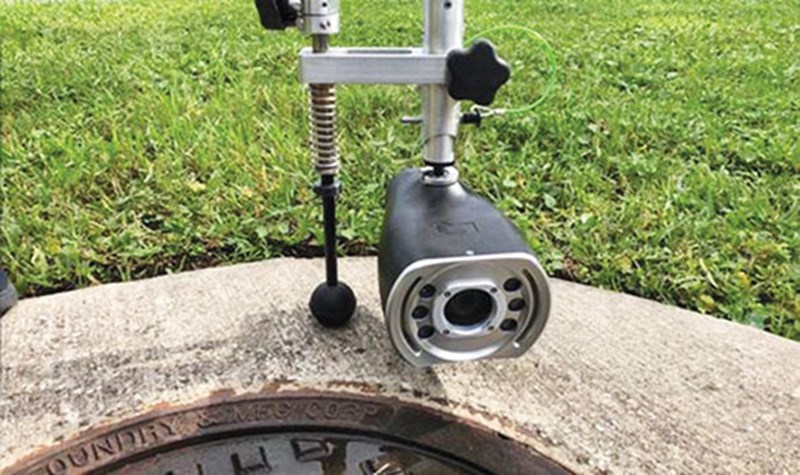July 2023 Vol. 78 No. 7
Features
Exploring the future of the manhole camera industry: Unlocking hidden insights
by Shubham Patidar
The manhole camera industry has undergone significant advancements in recent years, revolutionizing the way we inspect and maintain underground infrastructure. These compact and robust devices enable professionals to capture real-time visuals of sewer lines, pipelines and other inaccessible areas, aiding in efficient repairs, proactive maintenance and accurate diagnostics.
Between 2018 and 2022, the manhole camera industry had significant growth. The main driver of the industry’s expansion was the demand for efficient and reasonably priced solutions for maintaining and inspecting subterranean water and sewage networks.
During this time, the manhole camera market saw the introduction of several cutting-edge technologies, including wireless connectivity, high-definition cameras, and robotic platforms for remote inspections. These changes reduced the need for physical labor while improving the effectiveness and accuracy of inspections.

According to a recent Fact.MR report, the manhole camera market is anticipated to reach $368.45 million in 2023. The manhole camera market is anticipated to grow at a 5.7% compound annual growth rate (CAGR) to reach $641.39 million by 2033.
Manhole cameras are a growing industry because of increased commercial and industrial expansion, rapid urbanization and rising government spending on infrastructure development projects. A surge in government mandates to restore old subsurface drainage systems in many countries is fueling demand even more.
Technological advancements
Driving the manhole camera industry is remarkable technological advancements that will enhance the capabilities and functionality of these devices. These include:
- High-resolution imaging – Future manhole cameras are expected to offer higher resolution imaging capabilities, providing clearer and more detailed visuals of underground infrastructure. This will enable inspectors to identify and analyze potential issues with greater precision.
- Augmented reality (AR) integration – The integration of AR technology with manhole cameras holds immense potential. It will allow operators to overlay real-time data, such as digital maps or maintenance records, onto their camera feed, enhancing situational awareness and streamlining decision-making processes.
- Artificial intelligence (AI) and machine learning (ML) – AI and ML algorithms can analyze vast amounts of camera footage to detect anomalies, predict maintenance requirements and identify potential risks in real-time. By leveraging these technologies, manhole cameras will become even more valuable tools for infrastructure management.
Manhole cameras will see significant improvements in connectivity and data management capabilities as well. Wireless connectivity standards will likely be adopted such as 5G or Wi-Fi 6, allowing for faster data transfer and seamless integration with other devices or systems. This will enable remote monitoring and collaboration, facilitating real-time decision-making and reducing inspection time.
As the volume of data generated by manhole cameras continues to grow, cloud-based storage and analysis platforms will become indispensable. This will enable inspectors and engineers to access, analyze, and share data from anywhere, fostering collaboration and improving maintenance practices.
The integration of robotics and automation will also play a pivotal role in shaping the future of the manhole camera industry. Autonomous or remotely operated robotic systems equipped with manhole cameras will navigate underground infrastructure, capturing visuals and performing inspections with minimal human intervention. These robots will be capable of accessing challenging environments, reducing risks to human operators and providing comprehensive assessments.
As cities around the world embrace the concept of smart cities, manhole cameras will play an integral role in infrastructure management by contributing to the growing ecosystem of connected devices and sensors within smart cities. The data captured by these cameras will enable city authorities to make informed decisions regarding infrastructure upgrades, repairs, and resource allocation, leading to more sustainable and efficient urban environments.
By combining real-time data from manhole cameras with other sensors and data sources, predictive maintenance models can be developed. These models will help cities identify potential issues before they escalate, optimizing maintenance schedules and reducing costs. UI
ABOUT THE AUTHOR: Shubham Patidar is an experienced Client Partner at Fact.MR.




Comments